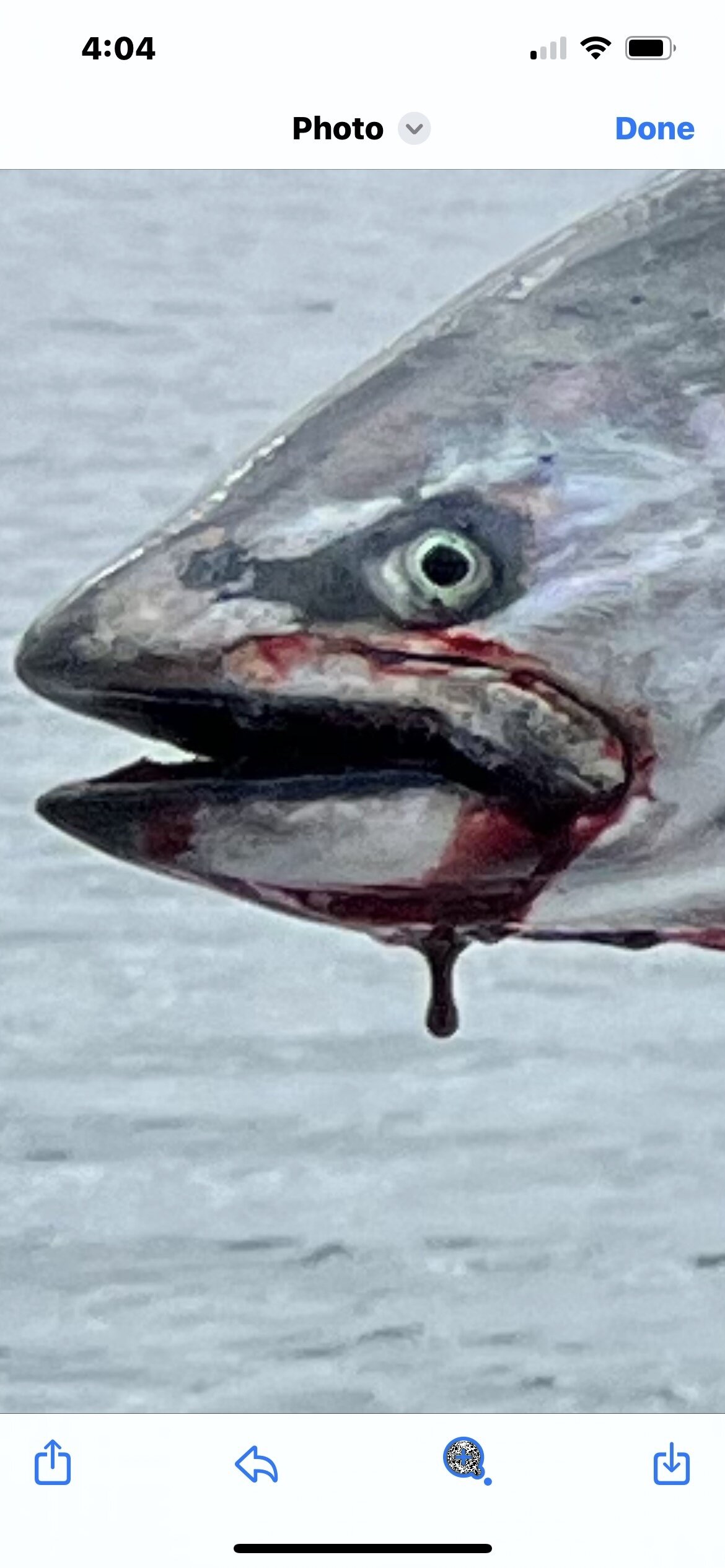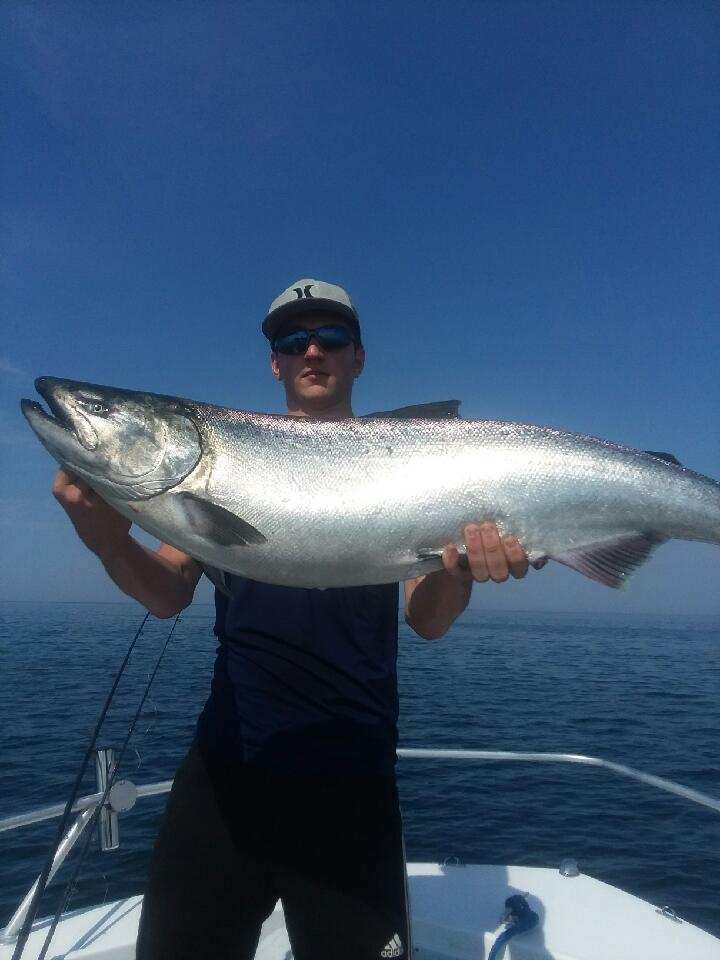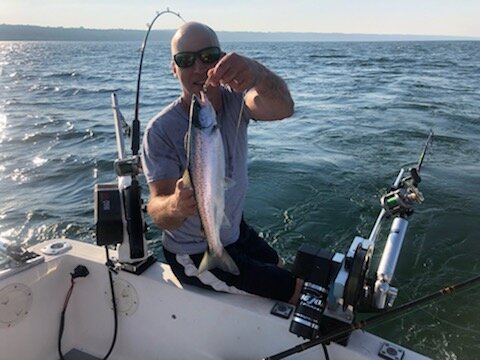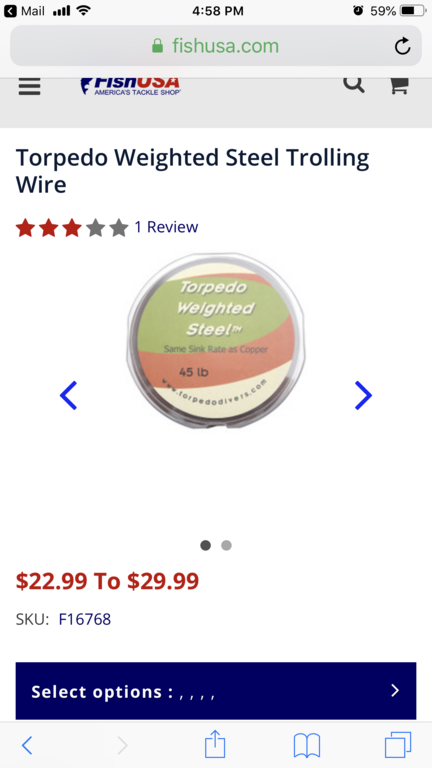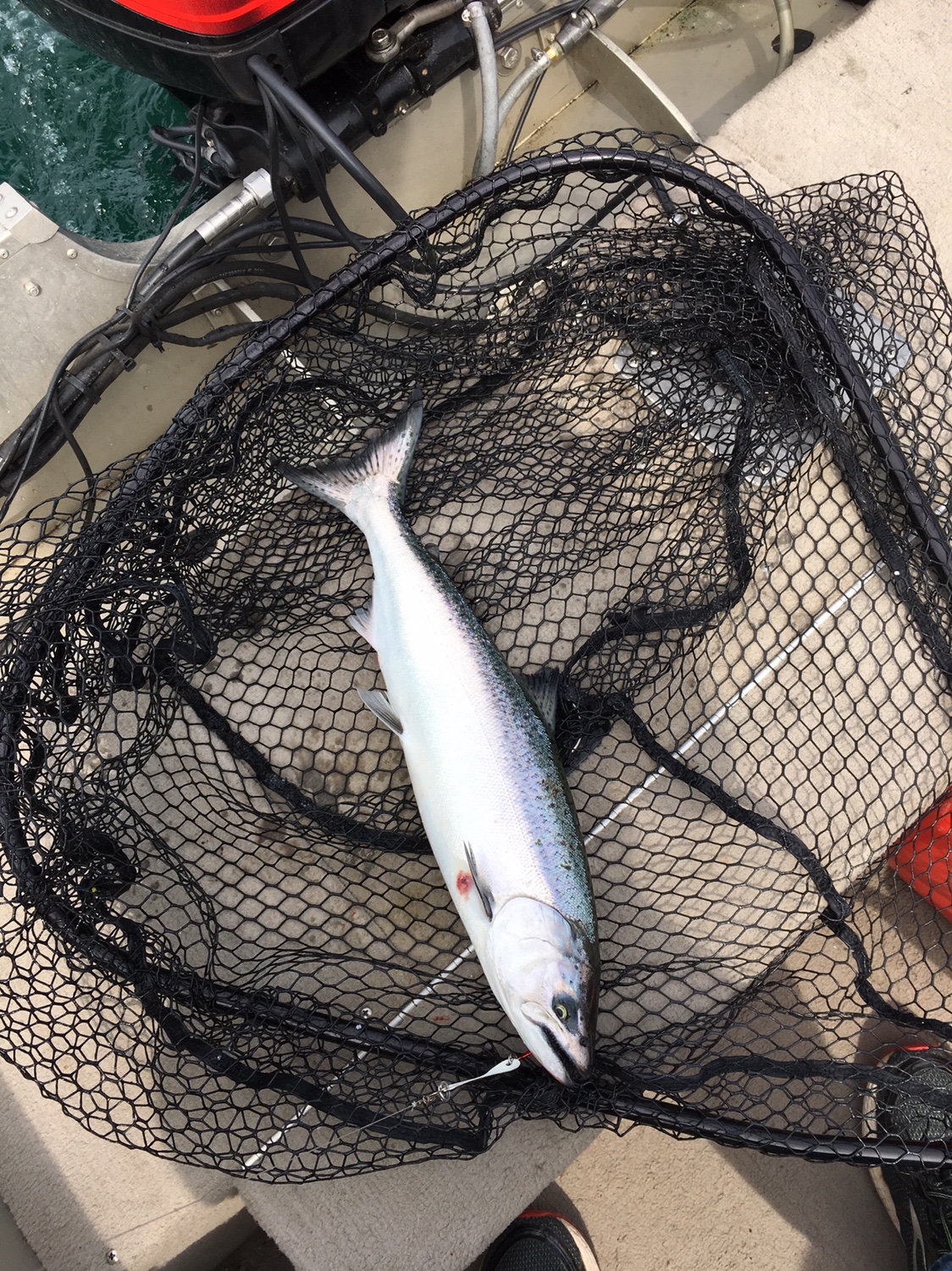-
Posts
7,259 -
Joined
-
Last visited
Everything posted by Gill-T
-
I am going to call them directly. Thanks
-
I am going to call them directly. Thanks
-
Malin used to be everywhere, now I can’t find it anywhere except on eBay. Always liked the handling of Malin over other brands. Anyone have any leads?
-

Mexico
Gill-T replied to buckblaster's topic in New York Fishing Reports - Lake Ontario (South Shore)
-
-
The delayed spring has bass on their beds. 10’ fow you can look down and see open shell beds carved out of bottom weeds. Every night DARK largemouth come into the shallows to pluck a few gobies before heading back to their beds. Tons of bass rigs around and I have yet to see anyone catch a bass. First night here I took a kayak up to the next dock and caught a three pounder on a bladed jig. Have not caught another since lol. Yes, I have tried Senkos.
-
Water temp is 75 degrees. We fished close to our rental up North near Verick. The goal today was to catch a brown. We set up at the North rim and played around in the 100’ zone. Tons of bait and hooks. No Browns but we quickly realized we could not stay out long. Warmer surface water at this end made fish revival difficult. We pulled lines at 8:00 with 5 of 6 lines dragging lakers, a undersized rainbow and an undersized Atlantic. We headed down the center Northbound over the north rim towing stickbaits for smallmouth but only got a pickerel. As usual back to the dock for breakfast by 9. I forgot to mention the great carp fishing at night. More pics. Lures for rainbows was a R&R alderton-type dodger Dave is offering towing a Warrior flutter lite spoon. The other two spoons are northport wild things.
-
First trip ever to Cayuga. Spending the week with family enjoying the light switch trip into summer from a cold crapy spring. Water temps on Saturday was 62 degrees. Today it is 73 degrees. I am really enjoying this lake! Dock fishing for kids, tubing, hiking the area state parks, Bass are spawning but pickerel and giant perch around AND.... great trolling for trout! The lake is just setting up. I am trolling over deep water near Dean’s Cove for three hours each morning and have been clobbering suspended lakers with occasional rainbows and sub-legal Atlantic’s. Flasher/fly down deep on center rigger, otherwise all spoons. Slide divers are stealing the show. 1.8 mph downspeed with R&R superlites on rigger outdowns and Northport Nailer Wild Thing spoons on divers. As the water has warmed considerably, we are using ice cooled water in our fish box to revive the lethargic ones for release. What a great fishery! The graph looks like Lake Ontario with bait balls and big hooks all over.
-

Crazy day out of sandy
Gill-T replied to HB2's topic in New York Fishing Reports - Lake Ontario (South Shore)
-

Mexico in front of plant
Gill-T replied to p3434's topic in New York Fishing Reports - Lake Ontario (South Shore)
-

Mexico in front of plant
Gill-T replied to p3434's topic in New York Fishing Reports - Lake Ontario (South Shore)
-

Down riggers and summer steelhead
Gill-T replied to steelfire's topic in Questions About Trout & Salmon Trolling?
NY waters is via countable hook points. 9 per rod which is the same as a stickbait with three trebles. Canadian rules are different -
-

No report just an apology
Gill-T replied to baitballin86's topic in New York Fishing Reports - Lake Ontario (South Shore)
-
So how would the LOC regard the extra weight of the ring lol. Great story.
-
Compression test? Tune-up kit? Timing off? Carb need adjustment? Are you misfiring? Sounds like it is time to get another set of eyes on it.
-

Down riggers and summer steelhead
Gill-T replied to steelfire's topic in Questions About Trout & Salmon Trolling?
Better landing ratio with fixed cheaters. -

Fair Haven wounded warriors
Gill-T replied to bout time's topic in New York Fishing Reports - Lake Ontario (South Shore)
-
Thumper is more stealthy. Don’t sweat it. Give them what they want. Riggers shine on the bottom past 100’.
-
Every boat should have an oar aboard which helps with the final docking.
-

Seneca Seneca Falls Sewage Discharge
Gill-T replied to My Time Out's topic in Finger Lakes Discussion
Will this end up in Cayuga? -

I-bay 6-19
Gill-T replied to Jjanm77's topic in New York Fishing Reports - Lake Ontario (South Shore)
-

Heading to Olcott June 22-24
Gill-T replied to DammitDave's topic in New York Fishing Reports - Lake Ontario (South Shore)
If you don’t have a downspeed, consider trolling North/South and look at the bend in your dipsy rods. -
Much to learn young skywalker. You need to learn the business side. You need to learn how to talk to people i.e. smooze clientele, even though you don't have a thing in common with them. You need to learn basic boat maintenance in order to keep your rig fishing and not canceling charters. Marine mechanics don't just drop what they are doing just because you have clients coming the next day. You need to learn how to network (without offending). You need to have all your fishing and safety gear. You need to have insurance. You should have a slip- home base. You need to learn how to deal with drunk obnoxious smokers on your boat. You need to know what to do when a client starts turning green and goes quiet. You need to have probably 120 charters to break even. You need to have the patience of Job to deal with late arriving clients or clients that keep dropping fish. You need to deal with clients who cancel last minute. You need to keep in touch with past clients for repeat business. Last but not least........you need to learn how to catch fish in an East wind!

